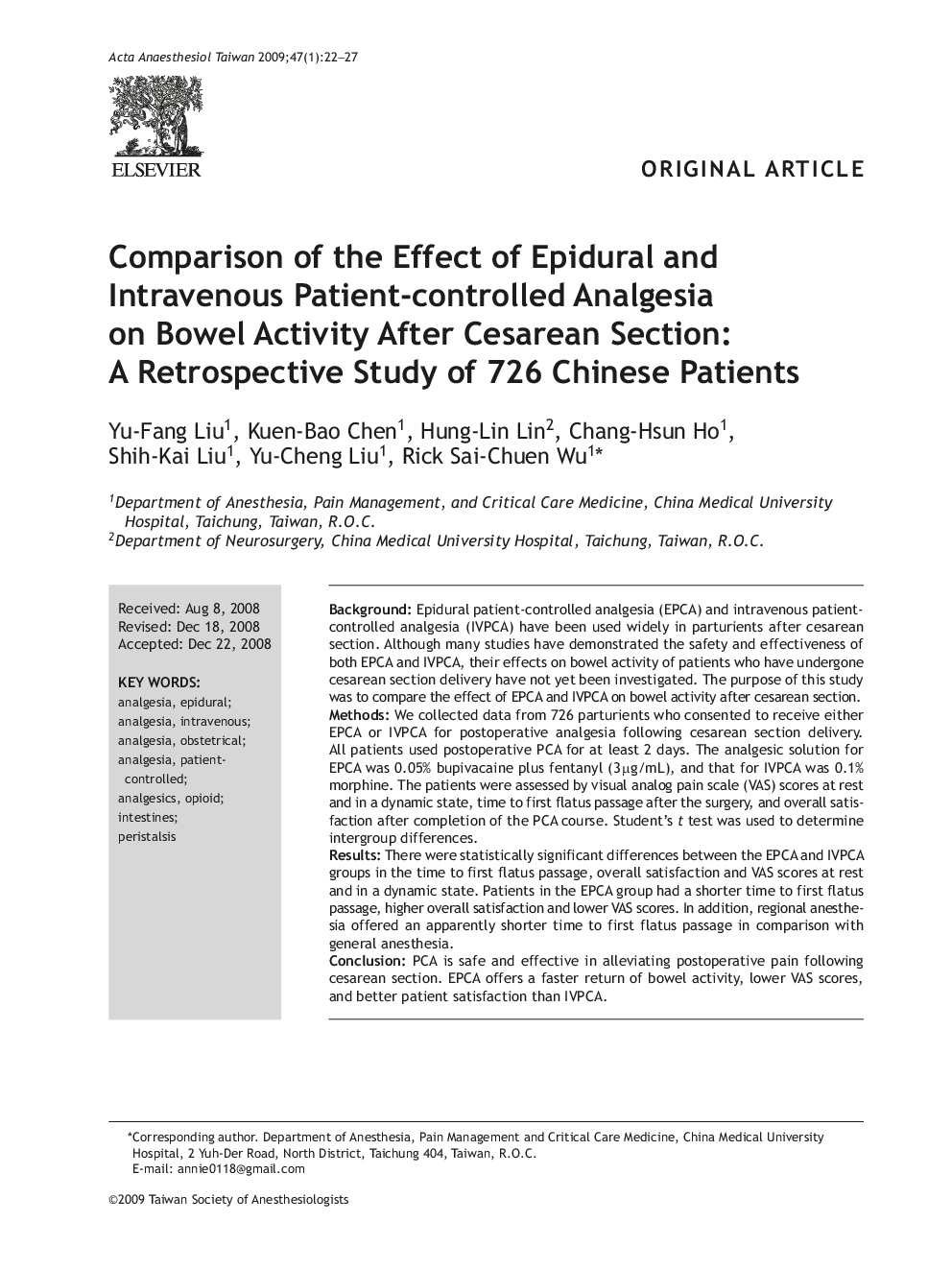| Article ID | Journal | Published Year | Pages | File Type |
|---|---|---|---|---|
| 2741690 | Acta Anaesthesiologica Taiwanica | 2009 | 6 Pages |
BackgroundEpidural patient-controlled analgesia (EPCA) and intravenous patient-controlled analgesia (IVPCA) have been used widely in parturients after cesarean section. Although many studies have demonstrated the safety and effectiveness of both EPCA and IVPCA, their effects on bowel activity of patients who have undergone cesarean section delivery have not yet been investigated. The purpose of this study was to compare the effect of EPCA and IVPCA on bowel activity after cesarean section.MethodsWe collected data from 726 parturients who consented to receive either EPCA or IVPCA for postoperative analgesia following cesarean section delivery. All patients used postoperative PCA for at least 2 days. The analgesic solution for EPCA was 0.05% bupivacaine plus fentanyl (3 μg/mL), and that for IVPCA was 0.1% morphine. The patients were assessed by visual analog pain scale (VAS) scores at rest and in a dynamic state, time to first flatus passage after the surgery, and overall satisfaction after completion of the PCA course. Student's t test was used to determine intergroup differences.ResultsThere were statistically significant differences between the EPCA and IVPCA groups in the time to first flatus passage, overall satisfaction and VAS scores at rest and in a dynamic state. Patients in the EPCA group had a shorter time to first flatus passage, higher overall satisfaction and lower VAS scores. In addition, regional anesthesia offered an apparently shorter time to first flatus passage in comparison with general anesthesia.ConclusionPCA is safe and effective in alleviating postoperative pain following cesarean section. EPCA offers a faster return of bowel activity, lower VAS scores, and better patient satisfaction than IVPCA.
